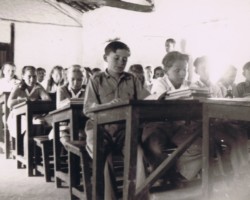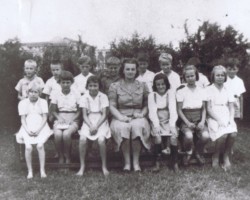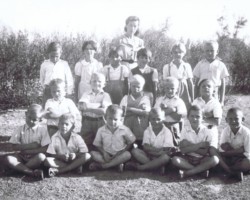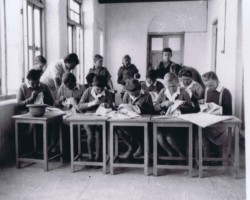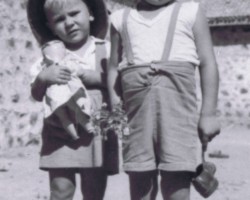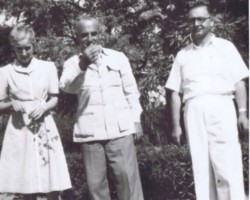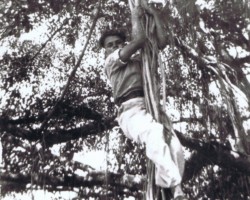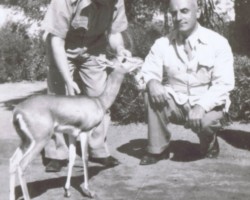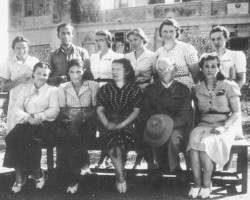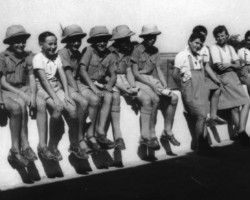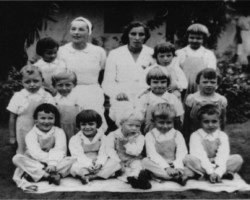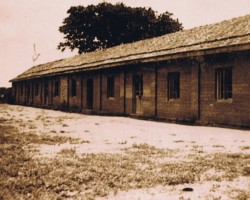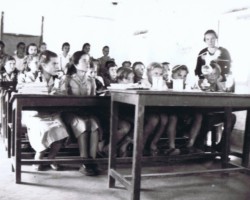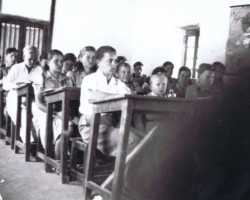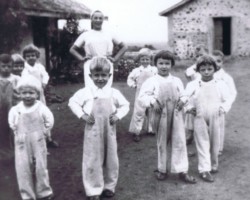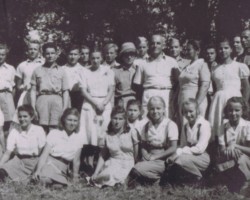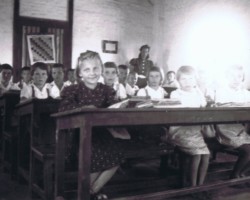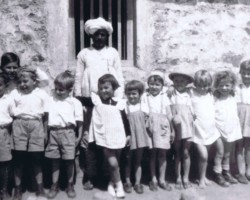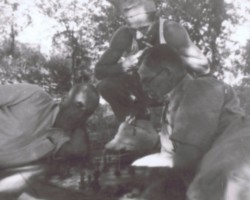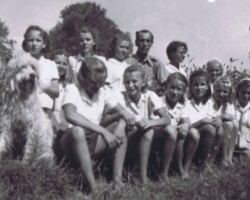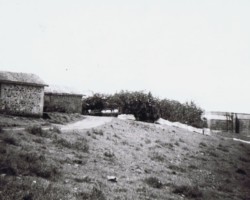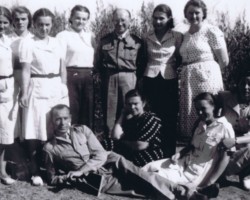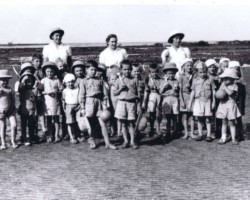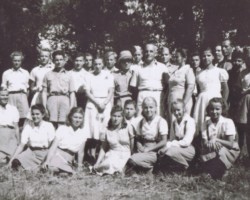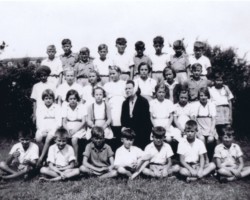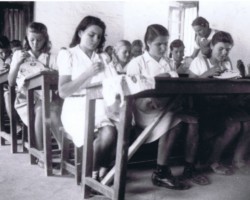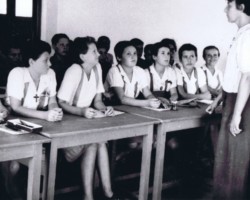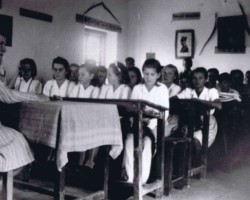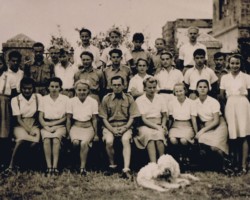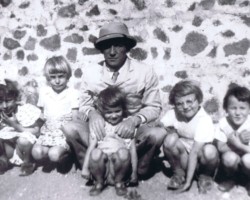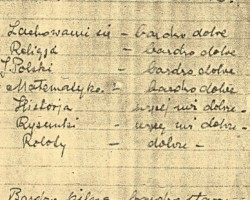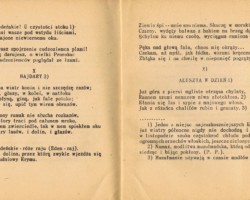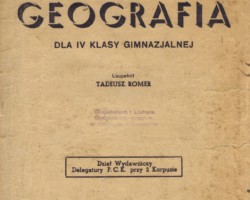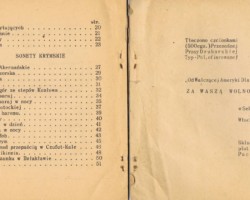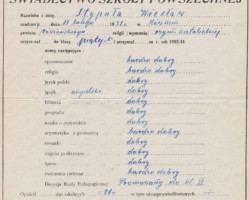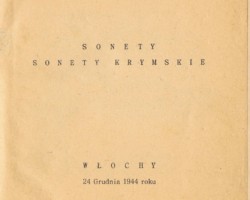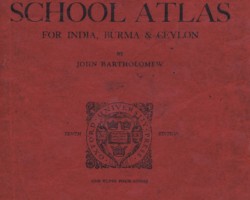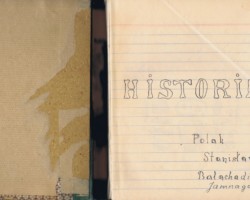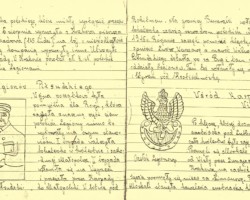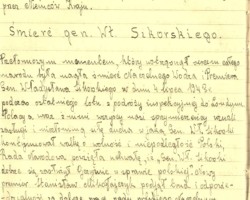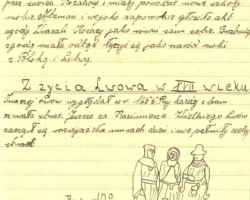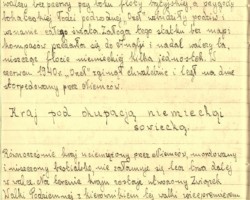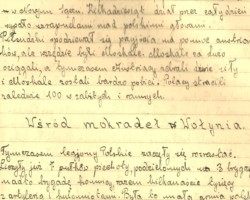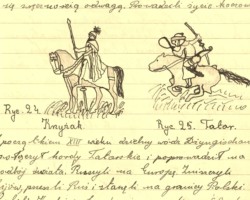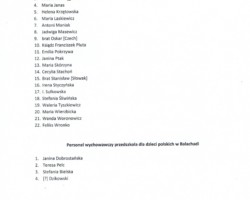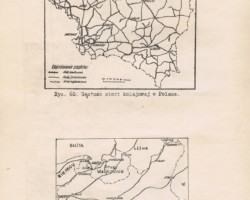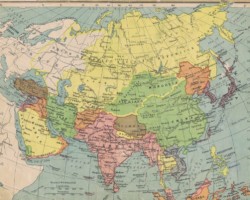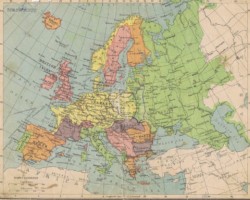Quick Links
Education
One of the most important tasks facing the management of the Balachadi settlement was to organize universal school education. The almost three-year educational break that the exile in the Soviet Union meant for children and young people caused a significant delay in their education. Previous ad hoc school classes undertaken in temporary centers in India were, for obvious reasons, more educational in nature than systematic learning. The youngest, orphaned children were in the worst situation. Many of them had problems even with using their native language correctly, mixing Polish and Russian words. In addition, the very different ages of the children, the lack of teaching staff and – initially – the complete lack of any textbooks, school supplies, writing materials (pencils, fountain pens…), as well as curricula and premises for conducting the education itself, were a great difficulty in organizing education in Balachadi.
Despite all these difficulties, within a few weeks it was possible to organize a primary school for 15 classes and a separate secondary school class. This was possible mainly thanks to three people: Maharaja Digvijaysinhji, who made the greatest contribution not only to the creation of the estate itself, but also donated his “Guest House” for the needs of the school – a large brick building for his guests, standing at the foot of the estate hill; Maria Skórzyna, who arrived at the estate in September 1942 in the second evacuation transport from the Soviet Union, organized by the Bombay Delegation of the Polish Red Cross (several qualified teachers arrived in Balachadi with her) and not only very quickly organized the school itself, but also became its first director; Janina Dobrostańska, who was entrusted with organizing a kindergarten for over 70 youngest children.
Initially, due to the lack of textbooks, school education was based on a rote system – both for teachers and students. Sometimes students copied lectures by hand, which became their ad hoc, substitute textbooks. Over time, pre-war Polish school textbooks gradually arrived at the school, reprinted by Arab printers in the Middle East. Unfortunately, there were very few of them, one textbook for several or a dozen students.
A significant problem in the proper education of children was also the teaching staff, of which only half had actual qualifications and pedagogical education. A significant reinforcement of the teaching staff was the arrival of two soldiers delegated to the settlement from the Middle East: a history teacher – Feliks Wronko and Antoni Maniak – a pre-war player of the Lviv Pogoń, who took on the physical education of the youth with exceptional skill.
Despite such unfavourable conditions, the level of education in the estate school was relatively high, and the youth transferred to the estate in Valivade (with time, the adolescents changed their place of residence and ended up in the largest Polish estate in India) could continue their education there without any problems.
